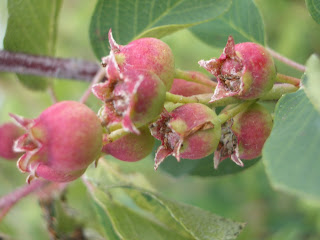"Scrambled Eggs" (Corydalis aurea)
I only found one patch of these growing (2008). Apparently, the seeds can lay dormant in the soil for years until some disturbance triggers their growth. It seems ants really like this plant ... I've seen other photos on "the net" where the flower has its token ant or two or three. I guess they are the bacon bits in the scrambled eggs??
"Use Medicinal: Amerindians used tea for painful menstruation, backache, diarrhea, bronchitis, heart diseases, sore throat, and stomach aches; inhaled fumes from burning roots for headaches. May be toxic.If you click here, you can read the various other ways this plant has been put to use.
Warning: This plant is believed to be poisonous to livestock if consumed in quantity. Humans should generally avoid ingesting plants that are toxic to animals." ~~Direct quote from this site ~~




















































